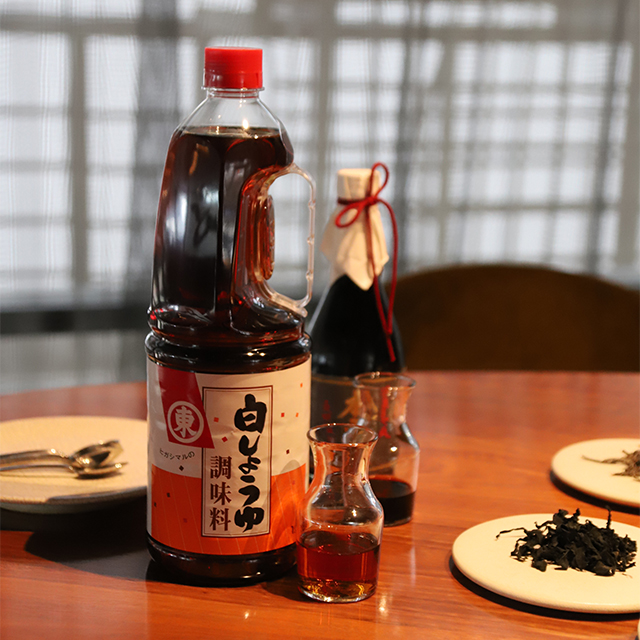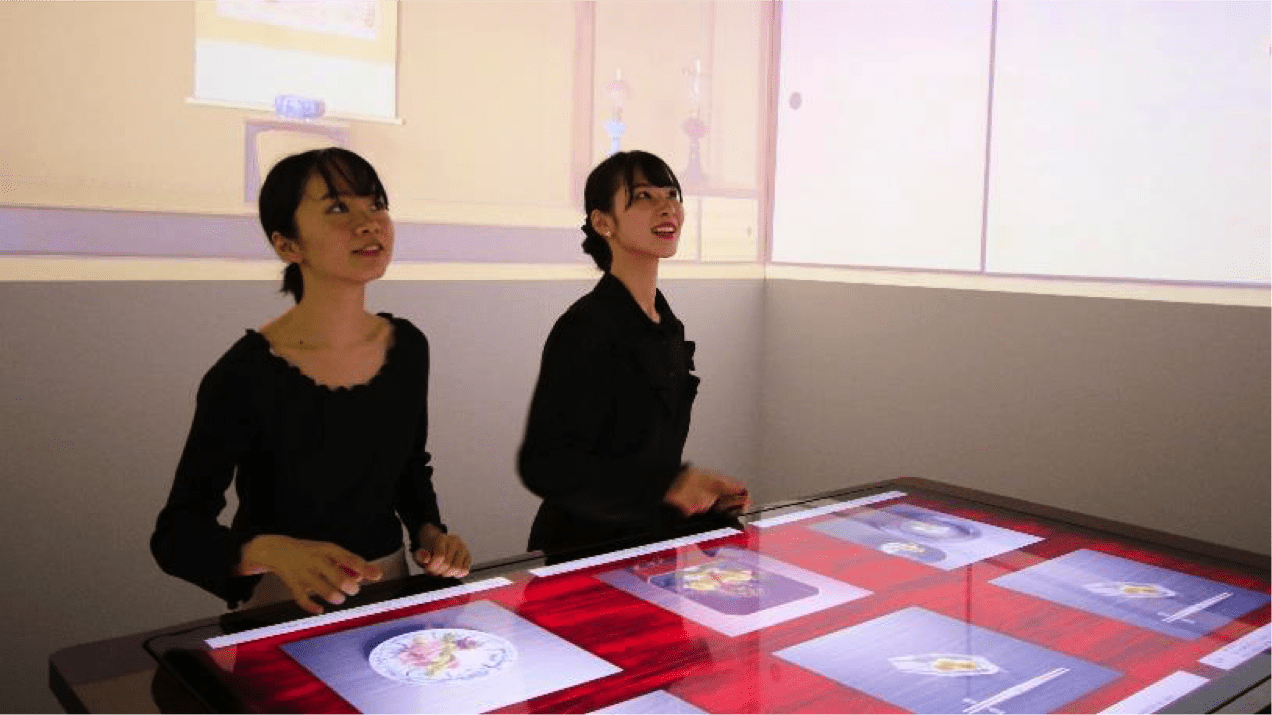
The Japanese way in Australia’s top kitchens’
Waiting in a paired back private dining room at Quay, Sydney’s most celebrated restaurant, closeup views of Sydney harbour draw me into the detail of the city’s best-recognised scenery. On my left, the iconic Sydney Harbour Bridge sits protectively over a slender waterway connecting the city’s northern suburbs. To my right, at the mouth of Circular Quay, the incomparable Sydney Opera House elegantly perches like a well-starched napkin fold. My eyes trace an invisible galley across the glimmering waterway at my feet to meet sibling restaurant, Bennelong – located in the nearest of the Opera House’s white sails. I can’t help but admire the positioning of both restaurants owned by the Fink Group and ponder whether they’ve seriously considered a private tunnel.
My thoughts are interrupted by the arrival of Executive chef across both properties, Peter Gilmore, who joins me for coffee. Within thirty seconds we’re deep in conversation about our mutual passion for Japanese ceramics . ‘I’ve always been drawn to the more organic ceramic style’ says Peter. ‘There’s something beautiful about an object that appears so simple at first, yet there’s a whole universe within the glaze’.
I cradle my cup, admiring it the light, and enquire as to where they’ve been sourced in Japan. ‘Actually, they’re made by one of the two Australian potters we commission tableware from. One studied pottery whilst living in Japan learning the traditional techniques of wood-fired kilns and various ash-glazes’ says Peter, who also studied ceramics in his youth and returned to it during the pandemic. The chef now designs most of the vessels used in presenting his intricate dishes, adding to the list of his many talents.

Chef Peter Gilmore (c)Nikki To
He continues to speak quietly but passionately about the importance of harmony between each vessel and the food contained within it, and how together, they present a story. I’ve known Peter for many years but it’s not until this precise moment that I fully realise the connection between his culinary style, which he simply describes as Australian cuisine, and the sensibilities of traditional Japanese cuisine.
‘Oh, there’s a definite Japanese influence... I’ve always been attracted to Japanese cuisine, even as a young chef, Japan’s approach to the culinary arts resonated with me. I adored reading Japanese cookbooks from an early age, mainly taken with the presentation style, and the respect for seasonality. It wasn't so much that I studied the detail and tried to replicate it, the connection was more innate – but when things started to line up with what was in my imagination, I started taking even more interest in Japanese cuisine and culture. ‘He looks wistfully towards several Japanese ingredients he’s collected from the kitchen to show me.
‘I first visited Japan when I was 27 and instantly fell in love. I remember coming out of an Osaka train station in the rain, and with all the neon it felt like I was in the set of Blade Runner, which was pretty amazing. I then travelled to Kyoto and explored a lot of temples, gardens and ceramic galleries. I’ve been back about 6 times now since for research and pleasure, eating at some of Japan’s best restaurants and discovering new ingredients. I’m always finding new foods to try but the art, skill and quality of seafood in a high-end sushi experience blows me away. The way many Japanese restaurants devote themselves to one cooking style is something to be relished – so much pride, care and dedication.’
The Japanese attention to detail , particularly when it comes to the production of the beautiful, high- quality ingredients he now has access to, wholly enamours the chef who excitedly passes me a packet of crushed Japanese sticky rice used in his highly popular, contemporary Congee dish. Originally developed for Quay, where it remained for many years, the dish now lives on at Bennelong, only the flavours change with the seasons. I’m reminded of a similar concept in Kaiseki cuisine, but this is an inadvertent nod.

Mud Crab Congee (ⅽ)Nikki To
‘I love Japanese rice and use it in several dishes but the reason I use this particular sticky rice is because the grains are pre-cut to a specific size (approximately 8 pieces per grain) ensuring even cooking and determining the texture and creaminess of the congee - it’s all about mouthfeel.’
He pauses, deep in thought. ‘When I started at Quay – over 20 years ago, my food was quite structured in some ways, however, being here, and growing vegetables in my garden, allowed my style to become more free-flowing and more representative of the natural scenes I’m surrounded by in my garden and the ocean.’
His private experimental garden, which often hosts Japanese vegetables such as kabu (turnips) which he explains are sweeter and more tender than European varieties, kabocha (pumpkin) and hatsuka daikon (radish), and sometimes citrus such as yuzu and sudachi, allows the chef to observe each stage of the plant growth, from seed to first sprout and from flower to fruit. The goal is to discover exactly which stage of growth provides the perfect texture, flavour and aroma for every dish he creates. The ‘test’ produce is then professionally grown for both restaurants, commonly including Shiitake and maitake (mushrooms) grown in Victoria and Tasmanian wasabi for a single beef dish on the Bennelong menu, the root used for a buttery emulsion sauce, the leaves used for garnish.

Bennelong (c)Nikki To
While Chef Gilmore is known for his exquisitely presented, organically-textured cuisine what has always struck me most about his food is the delicate yet impactful and somewhat emotive, layering of umami he seamlessly crafts throughout his menu . Even for an educated palate it’s difficult to pinpoint some ingredients he uses simply by taste - his flavours shimmy and evolve on the palate, plateau-ing into an immensely pleasurable flavour-sustain; the diner is always left with a desire to retain the moment, but desperate to know what magic will follow.
‘I love working with Australia’s beautiful fresh ingredients and it’s important to retain the integrity of each, but I find that providing a backbone of flavour driven by Japanese ingredients, often accentuates their natural features. I guess it’s similar in Japanese cuisine where they enhance the natural flavours of a vegetable, by cooking in an umami rich dashi. ‘
He gestures towards some bottles of treasured high quality shoyu, mirin, vinegar and various seaweeds.

Ingredient Shiro Shoyu (White Soy Source) (c)Jane Lawson
‘Although we only use around 12 Japanese ingredients in the kitchen, around 15-20% of the menu contains one or more of them.’ explains Gilmore. ‘But we don’t necessarily use them in the way they were traditionally intended. We’re not using soy or vinegar for their own effect – they instead offer layers of complexity within a dish.’ White soy is added to several dishes across the menu and Peter prefers the softness of Japanese rice vinegar in many instances to wine vinegar.
He explains that a Japanese ingredient might only appear in one component of a multi-faceted dish – for example at Quay they reduce aged mirin as a flavour base for a black garlic puree, simply because it is a more subtle way to add sweetness, as well as good acid balance. ‘You won’t necessarily note it in the puree, but it does something other ingredients cannot.’ However, on other occasions they’ll use several Japanese ingredients to layer umami, particularly in stocks where kombu and wakame feature; one chicken stock, for example, incorporates fresh shiitake, kombu and fish sauce for extracting maximum umami, which is then reduced and rounded off with some chicken fat, gradually building the depth.
‘Of course in the early days of my career, most available Japanese ingredients were of a pretty basic, commercial level. Later, Japanese supermarkets started carrying more high-end products as well as better range of choice. Over the last 15 years or so there's been a lot more specialty importers introducing premium Japanese ingredients.
He picks up a jar of Tomburi (an edible seed from the Summer Cypress plant) and explains that it’s a great caviar alternative in one of their vegan dishes but it also features in a dressing for one of his creations with more obvious Japanese influence; lightly poached abalone and octopus and raw scallops are dressed with aged brown rice vinegar, virgin soy and grapeseed oil - mixed with crumbled wakame seaweed and diced eschalot. It’s finished with Japanese turnip pickled in Japanese white rice vinegar.

Wild Blacklip abalone, young octopus, raw scallops, seaweed, aged vinegar(c)Steven Woodburn
‘If you actually pulled my menu apart about 50% of the menu is of Asian influence, with Japanese ingredients dominating.’
Chef Gilmore’s respect for Japanese ingredients and his considered approach in applying them makes him a natural, yet unintentional, ambassador for Japanese flavours which he believes are becoming a mainstay in world cuisine.
‘The more artisanal Japanese ingredients become available here, the more they’ll become part of the modern Australian dining scene.






